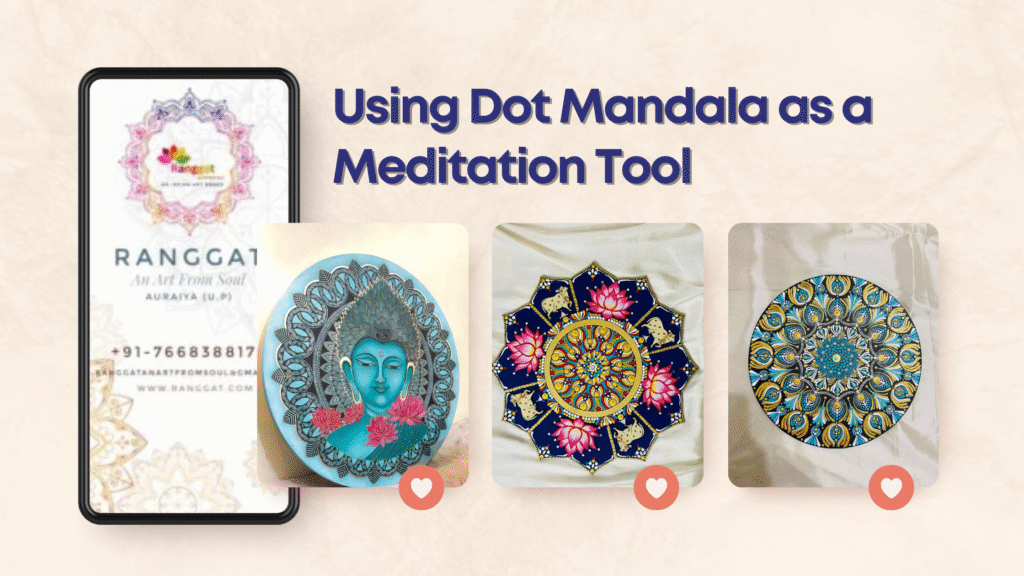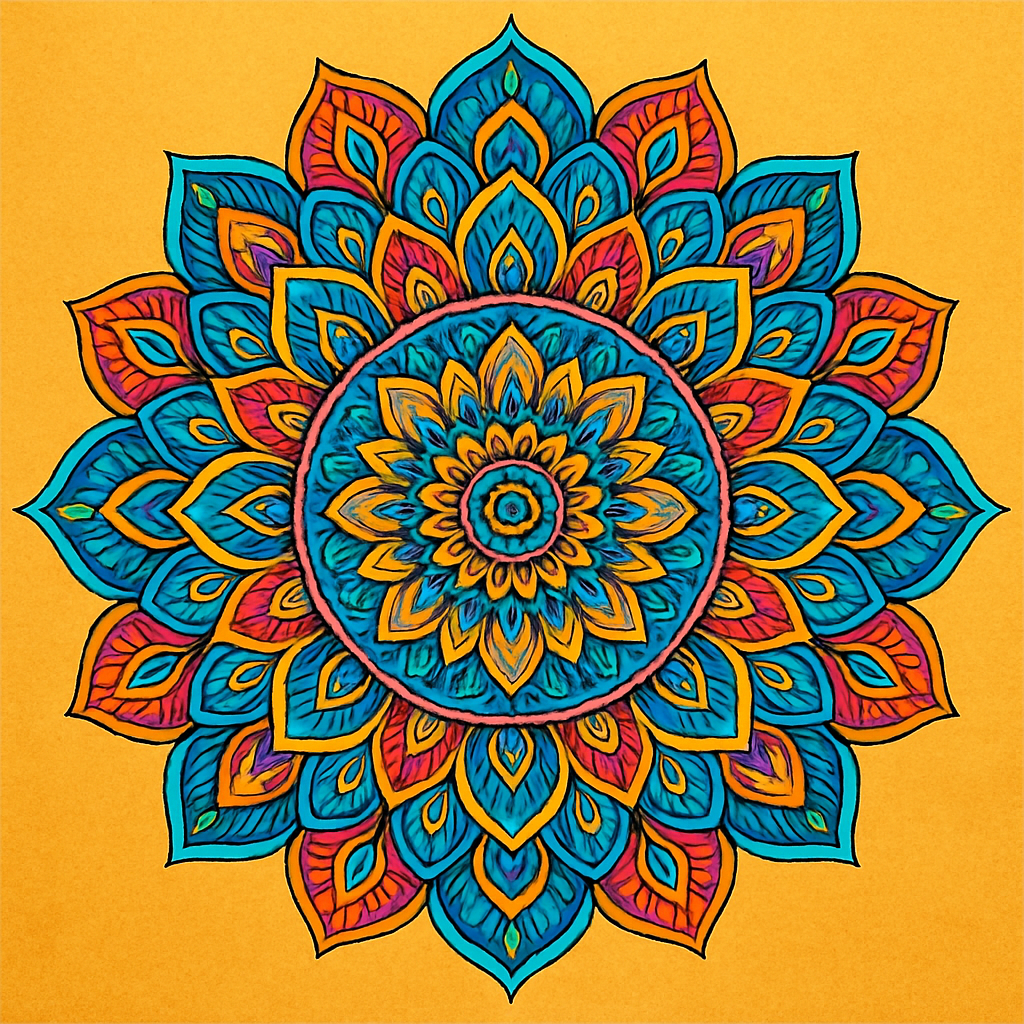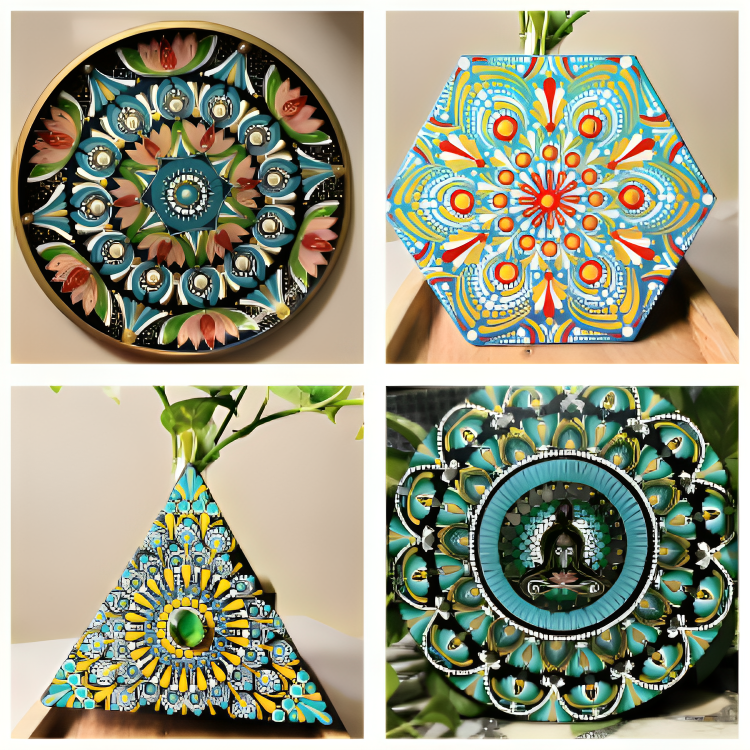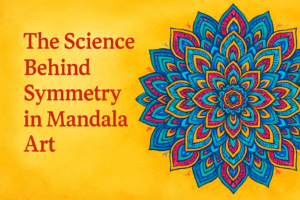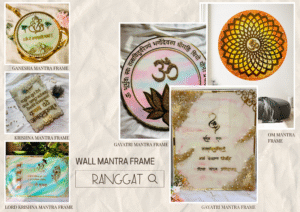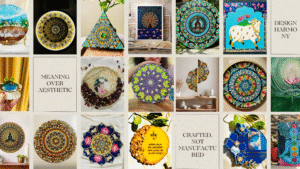A dot mandala isn’t just a work of art—it’s a portal into mindfulness, a visual anchor that can help quiet the mind, deepen focus, and bring inner peace. These intricate dot patterns, which have their roots in ancient symbolism, are perfect meditation partners because they gently direct your attention inside.
Here’s a step-by-step guide to using a dot mandala as part of your daily meditation practice:
1. Create Your Sacred Space
Choose a place where you can relax the most, such as the floor, a chair, a yoga mat, or a cushion. A soft throw, a candle, a spiritual memento, a favorite plant, or calming music are all examples of items that can help you feel at ease and have purpose. This space should feel like a personal sanctuary.
2. Place the Mandala at Eye Level
Place your dot mandala artwork on a wall, easel, or tabletop stand so that it is in direct view of you. This placement will help you gaze effortlessly without straining your eyes or neck.
3. Soften the Lighting
Make use of soft, pleasant lighting, like fairy lights, salt lamps, or natural light coming through a curtain. Focusing your thoughts is made easier, and the meditation experience is enhanced by a peaceful environment.
4. Settle In and Relax
Sit comfortably. Adjust your posture so that your spine is straight but not tense. Allow your body to relax fully. The more comfortable you are, the easier it is to stay focused and present.
5. Set a Meditation Timer (Start with 10 Minutes)
For beginners, start with a manageable time limit of 10 minutes. Set a soft alarm tone so you’re not startled when the session ends.
6. Connect with Your Breath
Take a few deep, focusing breaths while you briefly close your eyes. Then open your eyes and allow your breathing to return to its natural rhythm. Let the rise and fall of each breath become an anchor to the present moment.
7. Gaze into the Mandala
Shift your attention gently to the center of the dot mandala. Let your eyes relax. Don’t force anything—just observe. Allow your eyes to absorb the patterns and your mind to wander inward. When thoughts arise, acknowledge them without judgment and return your focus to your breath and the mandala.
8. Practice Daily for Deeper Benefits
Consistency is key. Your emotional clarity, inner peace, and mental balance can all noticeably improve with even a short daily commitment. Over time, this ritual can become your daily escape—a safe, sacred retreat within.
Gentle Tips to Enhance Your Practice
- Allow your curiosity to direct your attention rather than trying to focus.
- If thoughts come, pay attention to them and then slowly bring yourself back to the present moment.
- Experiment with various dot mandalas, colors, or even make your own as part of the practice.
- Incorporate calming background sounds or gentle instrumental music if it helps.
Why Dot Mandala Meditation Works
Dot mandalas’ symmetry and repetition naturally focus your attention inward. Deeply symbolic, relaxing, and centering, they act as a visual mantra. This meditation practice helps reduce stress, support emotional healing, improve self-awareness, and create harmony in your day-to-day life.
Let the dot mandala be more than art—let it be your window to stillness.
Through color, pattern, and presence, it opens the door to the peace that already lives within you.

